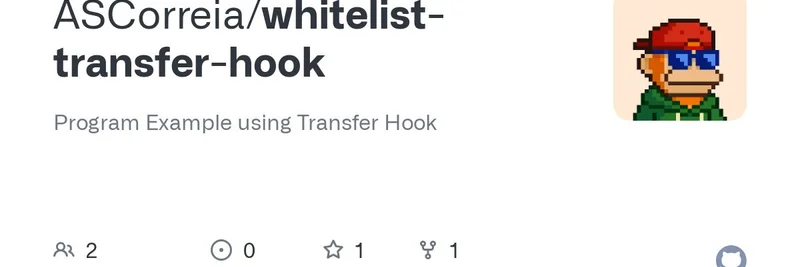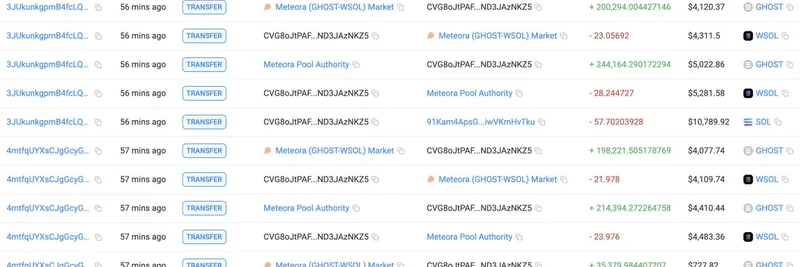Hey there, crypto enthusiasts! If you’ve been keeping an eye on the Solana ecosystem, you’ve probably heard about the exciting advancements in the Solana Token 2022 program. Recently, André Correia, a notable figure in the Solana dev community, dropped a fascinating project on X that’s got everyone buzzing. Let’s break down his latest creation: a program example using the Transfer Hook extension to enforce whitelist restrictions on token transfers. Buckle up as we explore this innovative approach!
What’s the Buzz About?
André’s post highlights a GitHub repository (ASCorreia/whitelist-transfer-hook) that showcases how to use the Transfer Hook feature in Solana’s Token 2022 standard. This feature allows developers to add custom logic to token transfers, and in this case, it’s all about controlling who can move tokens. Only whitelisted addresses—pre-approved users—can transfer these tokens, adding a layer of security and exclusivity.
The project got a shoutout from the Solana Turbine initiative and a nod to contributor umacanadas for their valuable input. This collaboration shows the power of the Solana dev community coming together to push the boundaries of blockchain tech.
How Does the Transfer Hook Work?
For those new to this, a Transfer Hook is like a gatekeeper for token movements. When someone tries to transfer a token with this feature enabled, the hook runs a custom program to check if the transfer should go through. In André’s example, the hook verifies if the sender’s address is on a whitelist—a list of approved users stored on-chain.
This is part of the Token 2022 extensions, which bring new functionalities to Solana’s token system. Think of it as upgrading a basic token to have superpowers, like restricting transfers or adding metadata, all while keeping things secure and scalable. André’s implementation uses Anchor, a popular framework for Solana development, to build this program.
Diving Into the Whitelist Mechanism
The whitelist itself is a dynamic state account managed by an admin. Here’s the cool part: it can grow or shrink as addresses are added or removed. The admin can:
- Initialize a Whitelist Account: Starts with an empty list of addresses.
- Add or Remove Addresses: Adjusts the list and reallocates space on the blockchain, handling rent costs automatically.
- Validate Transfers: The Transfer Hook checks the sender against this list during every transaction.
This setup is perfect for projects like NFT mints or exclusive token drops, where you want to limit access to a select group. Remember those hyped whitelist NFT mints from the past? This tech could bring that vibe back with a modern twist!
Why This Matters for Blockchain Practitioners
The responses to André’s post on X show the excitement and potential here. Users like Alexander Grey are working on libraries to support these extensions, while others, like Leo Pham, are dreaming up whitelist NFT mints. Even Nomadz suggested integrating this with a decentralized exchange (DEX), hinting at future possibilities.
For developers, this is a goldmine. You can use André’s code as a starting point to build secure, customizable token systems. Whether you’re creating a community token or a regulated asset, the Transfer Hook opens doors to innovative use cases. Plus, with Solana’s high-speed blockchain, these operations happen lightning-fast!
Getting Started with the Code
If you’re a hands-on learner, head over to the GitHub repo. You’ll need the Solana CLI and Anchor set up—check the Anchor docs if you’re new. The repo walks you through:
- Setting up a Whitelist account with a dynamic address vector.
- Implementing the Transfer Hook to validate transfers.
- Managing account resizing and rent adjustments.
André’s code includes detailed comments, making it a great resource for both beginners and seasoned devs. Give it a try and see how you can tweak it for your projects!
The Bigger Picture
This project aligns with Solana’s push for token extensions, as outlined on solana.com. Big players like Paxos are already using these features for stablecoins, and more are on the way. The Transfer Hook’s ability to enforce rules like whitelists could revolutionize how we think about token ownership and access control.
So, what do you think? Ready to experiment with this tech? Drop your thoughts in the comments or join the conversation on X. And if you’re building something cool with Transfer Hooks, let us know at Meme Insider—we’d love to feature your work!


